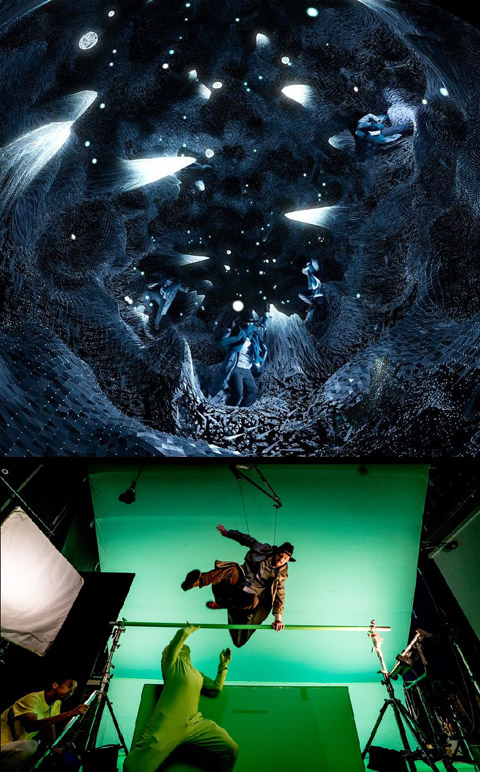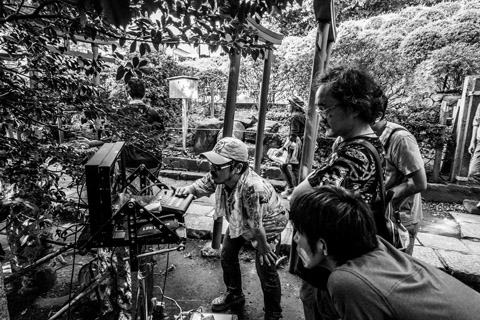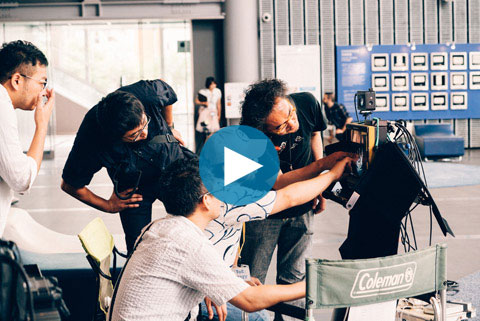This work has to fully fill the screen of the Dome Theater and present a direction with an enhanced immersive experience. For these reasons, it was shot with a special lens known as an 180-degree fisheye lens. These lenses are seldom used when shooting a film, so even something that would have been a simple process under normal conditions became a repeated cycle of trial-and-error. Even Mr. Shimizu, who has produced numerous films to date, and his filming staff had to discover their way around the shooting. The use of an 180-degree fisheye lens allows for round image shooting. There is little distortion at the center of the screen, while distortion gradually increases outward toward the rims of the circle. When this film is shown on a flat screen, the images on the right appear round and distorted; however, when shown in a dome theater, the distortion is corrected and presents a natural-looking film.
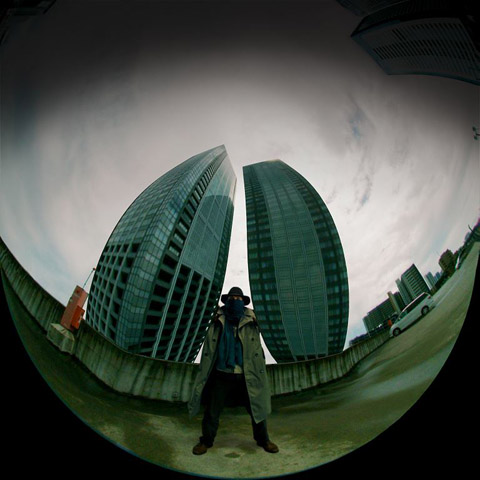
When shooting a film for a round screen, where on the screen is the subject captured during the shoot?
Miraikan’s Dome Theater is a stepped theater angled at approximately 23 degrees, and its films are screened on the surface of the dome. Hence, the line of vision for the audience when they are seated at the Dome Theater and looking at the screen is different from the center part of a round screen. Furthermore, there is also the question of which part of the screen captures the subject most effectively in order to use the entire Dome Theater in the staging of the film, for example, by having T.o.E. appear not only at the front of the theater, but also from all possible directions in the left, right, and back. To find the answer, countless test shoots based on the storyboard as well as trial screenings were conducted at the Dome Theater before the actual shooting of the film.
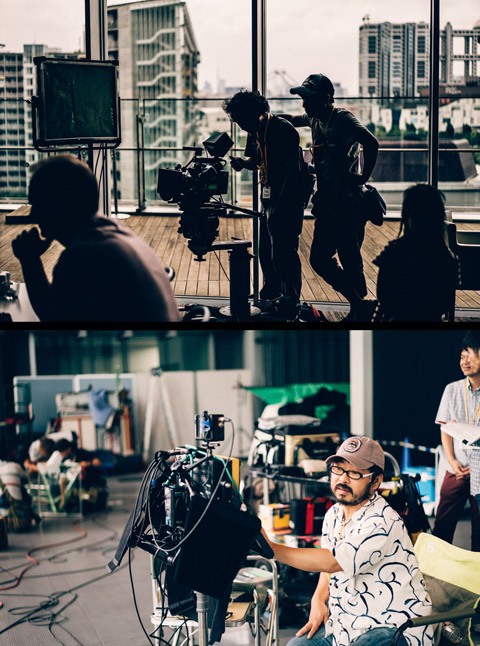
In addition to locations in various parts of Tokyo, shooting also took place at Miraikan for a total of four days, during hours and days when it was closed to the public. Many types of shooting equipment and artistic film sets were brought into Miraikan. Miraikan appears in several scenes of the film, including its symbol exhibit, Geo-Cosmos. This was planned by Mr. Shimizu who felt that the audience would enjoy touring the museum and making discoveries by matching the scenes they had just seen in the film with reality. Viewers can also revel in the museum’s nighttime atmosphere when they see the scene showing the Geo-Cosmos at night, a sight that cannot usually be captured during the museum’s regular opening hours. How many scenes shot at Miraikan can you find in the film?
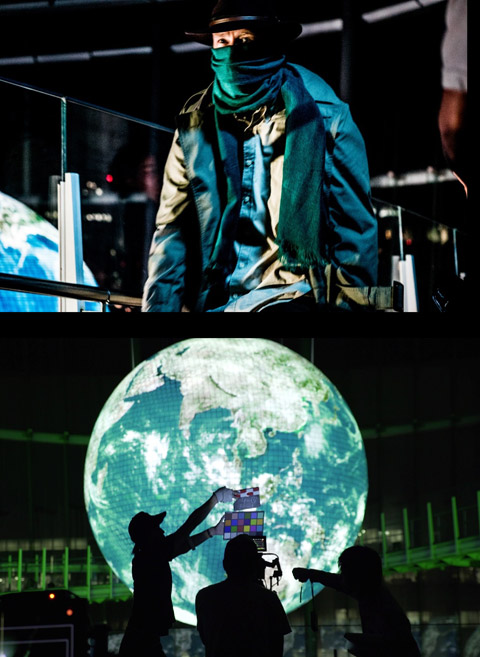
At the start of the film, Professor Asahi delivers a lecture on superstring theory. This scene was shot at the Miraikan Hall and shows a blackboard with writing in the background of the scene. On the left of the blackboard there are some quantum mechanics equations, while on the right equations describing the theory of relativity. At the bottom center of the blackboard, written in red-colored chalk, is “D = 9.” The “D” refers to “dimension” in short and the expression refers to the nine dimensions. The text written on the blackboard is an explanation by Professor Asahi that the micro world (quantum mechanics) and the macro world (the theory of relativity) are connected by the superstring theory, and that there are nine dimensions in the superstring theory. These are important equations that foretell the cross-dimensional travels that Professor Asahi and the scientists will be embarking on.
The text on the blackboard was written by Science Communicators at Miraikan, based on the actual equations and descriptions for this scene handwritten by Professor Ooguri. He supervised the film and scanned and sent data from the United States where he currently resides. The layout of the equations and other aspects of the scene were completed with verification from Professor Ooguri through international calls.
Speaking of equations, in the climax scene where it seems as if T.o.E. is about to be caught, equations also flow from the hands and bodies of the scientists. These include equations such as Newton’s equation of motion, Maxwell’s equations for electromagnetism, the Navier-Stokes equations for fluids, the basic equations for the world of elementary particles, and the basic equations for the world of gravity. Based on the wishes of Mr. Shimizu, all of these were equations handwritten by Professor Ooguri. The film was shot using a greenback screen set up in Miraikan’s Symbol Zone, based on the premise that the equations would be added later using composite computer graphic images.
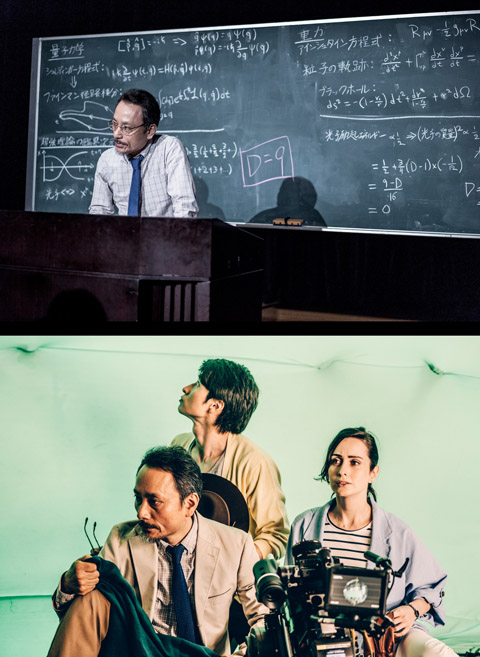
As Professor Asahi commented, “All possibilities are present at the same time!” the scene (images) set against a quantum space (the ultra-micro world where quantum mechanics work) shows T.o.E. emerging from all directions of the dome, which was produced with the idea of Mr. Shimizu’s storyboard. To achieve this scene, the live action shooting by T.o.E. was completed in a greenback studio in one full day and then overlaid on a quantum space created using computer graphics. The quantum space, dominated by special rules instead of gravity, and the scene where T.o.E. moves gallantly across dimensions, are unique directions created by Mr. Shimizu that take the boldly insert live-action into worlds that are actually invisible to us. The care that he gave to these scenes imbued the work with a unique sense of reality. However, shooting for long periods of time while suspended on a wire was extremely exhausting for both the staff and for James Sutherland, who played T.o.E. In addition to shooting in the studio, James had to act in the scorching sun while dressed in a coat and scarf. Here, he looks back on the shooting experience.
"An incredibly humbling experience to collaborate on this project. Not only to work with Mr. Shimizu, and watch how a film maker of his calibre deals with the intricacies of making such a film, but to delve into such dense subject matter. It gave me an opportunity to step back from some of the trivialities of the everyday and explore a world far beyond my own and at the same time one that helped to shape us and one we are also connected. Its a piece I'm very proud of as an artist as it reflects a curiosity for the structures and phenomenon of life, furthermore, its modern film and 3D technology allows us speak to people through ways in which they can identify. It has been hugely influential in some recent personal artistic choices where themes from this project are resonating in new theatrical work we are building with our theatre company. I wish to extend my deepest gratitude to everyone at the Miraikan, the cast and crew for their hard work and care on such an important piece of work."
Mr. Shimizu’s response was, “Having the film captured in this way is a great honor for me. I feel happy that the scientists, actors, and producers of this film had worked together and shared in the pains and joys. I am also grateful for the cooperation and assistance from all the parties whom I would normally not have any opportunities to work directly with. These are the members of Miraikan who were involved in the planning process of this film. Even though I say this from my role as the director of this film, this is a work that Miraikan can present to the world with confidence. I believe that it is an enjoyable film for all audiences, and it explores scientific themes that are related to the lives of anyone, anywhere. In particular, I had made this film with the hope that it will provide positive stimulation to children and young people, and help them discover an interest in science and film. Discard the preconception that ‘it seems like a difficult subject to understand,’ and take a look at this film first!”
